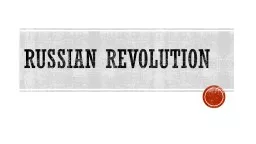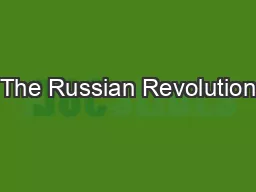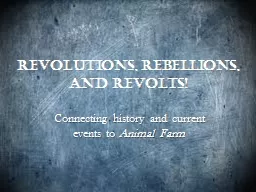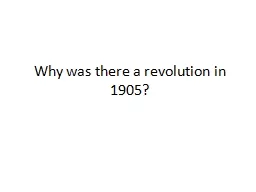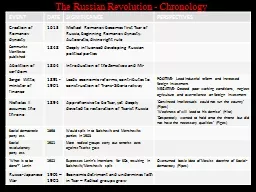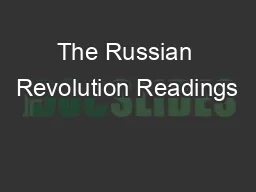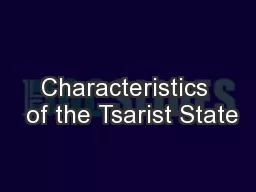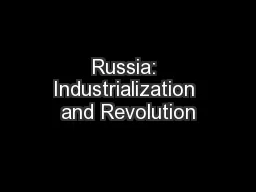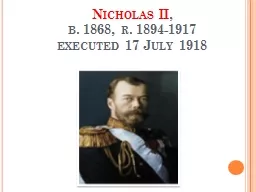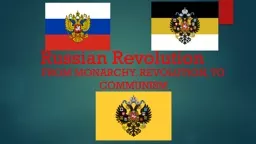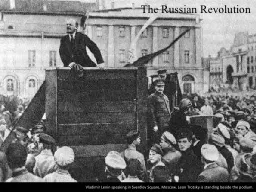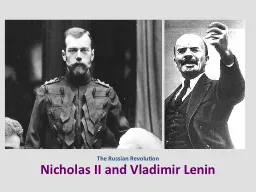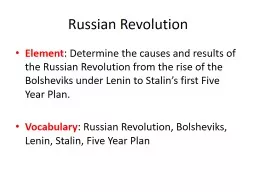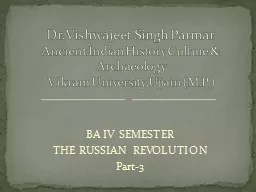PPT-Russian Revolution 1905 Revolution
Author : jane-oiler | Published Date : 2018-10-26
What happened What was the Tsars response Impact of WWI For Russia WWI devastating Nicholas II distrusted the Duma and resisted popular involvement in government
Presentation Embed Code
Download Presentation
Download Presentation The PPT/PDF document "Russian Revolution 1905 Revolution" is the property of its rightful owner. Permission is granted to download and print the materials on this website for personal, non-commercial use only, and to display it on your personal computer provided you do not modify the materials and that you retain all copyright notices contained in the materials. By downloading content from our website, you accept the terms of this agreement.
Russian Revolution 1905 Revolution: Transcript
Download Rules Of Document
"Russian Revolution 1905 Revolution"The content belongs to its owner. You may download and print it for personal use, without modification, and keep all copyright notices. By downloading, you agree to these terms.
Related Documents

